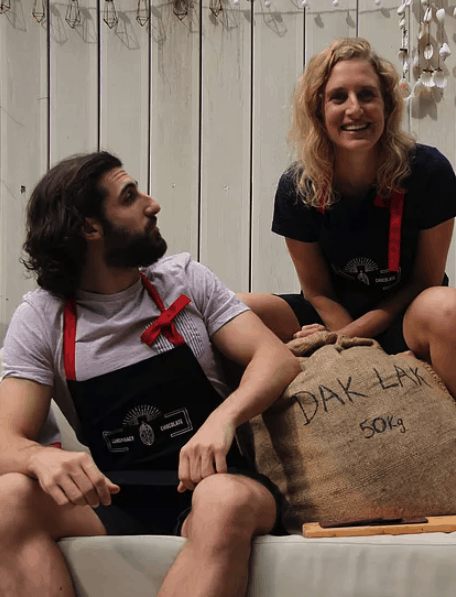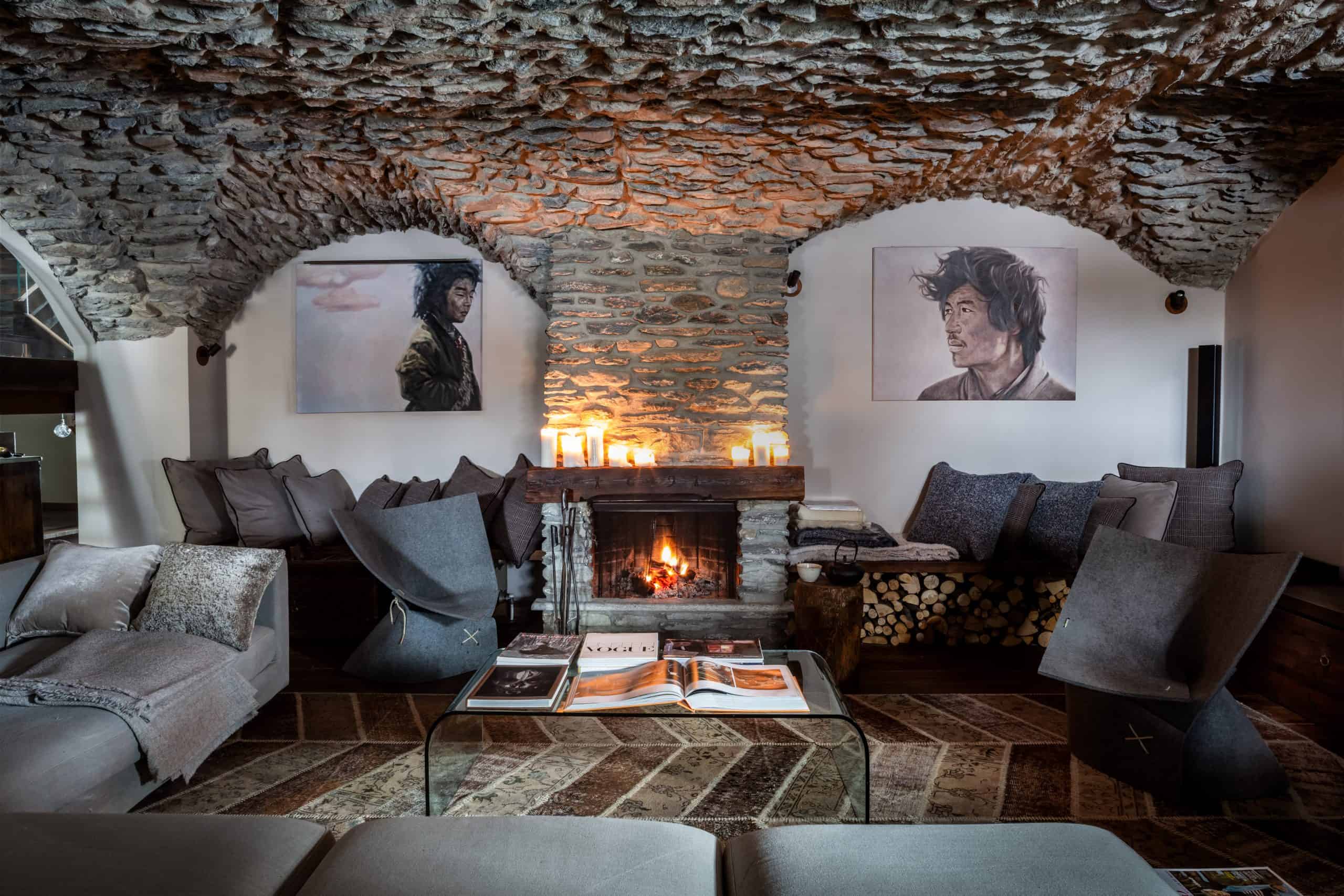When it comes to healthy diets and sweet treats, everyone assumes that it’s a no-go area—but chocolate is one delicious indulgence you can put on the ‘yes’ list. Hong Kong-based Israeli chocolate maker Amit Oz started bean-to-bar chocolate brand Conspiracy Chocolate with his Swiss girlfriend Celine from their kitchen in Sai Ying Pun, and have since started selling their high-quality dark chocolate to brands like Eric Kayser and Sweet World, along with retailing in their online store. Celebrating its first birthday this year, Compare Retreats spoke with Amit about the health perks of chocolate, how to use it for wellness, and the must-try flavours of Conspiracy Chocolate.

Tell us a little bit about yourself and Conspiracy Chocolate. I’m a headhunter for strategists across industries by day, and a chocolate maker by night. Conspiracy Chocolate was born in our kitchen—my girlfriend Celine’s and mine. We were playing with flavours and felt there could be more creativity in chocolate. Celine then took a chocolate course back home in Geneva. We wanted to get more fundamental and play with the flavours in the chocolate itself and began experimenting with cacao beans from farms all over the world. We’ve chosen a favourite in Vietnam and we’ve been slowly learning and growing. Today, our chocolate is in 17 shops and we host workshops teaching the craft to other chocolate enthusiasts. Conspiracy Chocolate is an ongoing learning experience on flavour development, a fun combination of art and science.
We heard rumour chocolate might be good for our health. Is it true? Dark chocolate with high cacao content is one of the most nutrient-dense foods you can eat. Cacao, and therefore dark chocolate (at least 70%) has an incredible range of antioxidants that protect you from all kinds of bad. It’s rich in fibre and minerals like iron, zinc, magnesium, potassium, copper, calcium and manganese. Sugar obviously does very little to our benefit, but eating a small amount of useless calories to make such a great health product palatable (to say the least) is a solid tradeoff.
For hardcore chocolate fans, adventurous foodies and the health-conscious, bean-to-bar chocolate is where it’s at.
What are some of the health benefits of chocolate? Several studies in humans show that dark chocolate improved blood flow, lower blood pressure, reduced oxidised LDL (known as ‘bad cholesterol’) and improved brain function. It’s also been shown to reduce the risk of heart disease, one of our biggest causes of death. Fermented foods, including chocolate, are also excellent for your microbiome, which has a range of positive physical and mental implications. Thanks to all this and more, cacao is an excellent mood enhancer and anti-depressant—cacao has Theobromine in it, a euphoric mild neurotoxin. The correlation between happiness and physical well-being is clear beyond the chemistry. If you’re looking for more, keep an eye on our upcoming release of CBD-infused chocolate.

What’s the deal with raw chocolate versus roasted? All of the above benefits exist in roasted chocolate. Raw is sometimes a smart alternative if you’re really looking to maximise the benefits of cacao by a small margin. It’s not something Conspiracy Chocolate does, as it’s commonly agreed raw chocolate does not taste as good and I’m wary of the bacteria from fermentation which we kill in roasting, but there are some great brands that do this well, like Raaka. Roasted chocolate poses no threat though, and it is more delicious. If you’re looking at chocolate purely as a health product, snack on cacao nibs for a delicious indulgence that doubles as a healthy superfood, and eat your favourite dark chocolate from a company that doesn’t put garbage in it, like bean-to-bar.
One of our hashtags is #betterthanbroccoli, because our 75% cacao chocolate contains 10% protein—more than three times broccoli, which is a legitimate source of protein. This makes chocolate like ours a great post-workout snack.
What exactly is bean-to-bar? Bean-to-bar is a more intentional process: from the cacao beans themselves to the farm’s terroir, fermentation and drying process, bean-to-bar chocolate is a personalised crafting process that focuses on quality and nuance as opposed to consistency and mass-market trends. I have nothing against mass-produced chocolate and often enjoy Lindt, but for hardcore chocolate fans, adventurous foodies and the health-conscious, bean-to-bar chocolate is where it’s at.
See also: Chocolate Massages & Hot Yoga At Fivelements Habitat Hong Kong
How can chocolate help with workouts? One of our hashtags is #betterthanbroccoli, because our 75% cacao chocolate contains 10% protein, more than three times broccoli, which is a legitimate source of protein. This makes chocolate like ours, and other high-quality chocolate, a great post-workout snack. The combination of energy in the raw organic cane sugar and protein from the cacao makes it also a great boost of energy pre or during a tough workout, too—my suggestion is post-workout.

When should we avoid chocolate? Pregnant women should avoid raw cacao, as the bacteria is unpredictable—my understanding is that roasted chocolate is fine, though. I wouldn’t recommend eating any sugars right before bedtime, but 100% cacao content chocolate is actually fine because you digest the proteins slowly overnight which supports your muscle development during sleep.
What are some fail-safe tricks to cleaning up our sweet-treat habits? Most of the time the tastiest natural treats are fine to eat. The big things to avoid are white flour and white sugar, which can be replaced with things like almond flour and natural sugars like dates or bananas. Another important thing is to eat indulgences intentionally. Don’t eat sweet foods while watching TV or listening to a podcast, but focus on enjoyment: allow your brain to satisfy the craving so you won’t need more.
Consumers can vote with their spending habits for the more sustainable model and buy chocolate from companies that respect these farmers, pay them well and partner with them on improving their product.
What things can consumers look out for to make their chocolate is as sustainable and responsibly sourced as possible? Farmers are torn between two models—corporates like Nestle, who will pay less for lower quality, and independent makers who will pay more for higher quality and unique terroir—and each has obvious risks and guarantees. These are defined by demand and buying habits. Consumers can vote with their spending habits for the more sustainable model and buy chocolate from companies that respect these farmers, pay them well (far higher than “fair trade” standards) and partner with them on improving their product. Buying bean-to-bar chocolate from makers who work closely with these farmers and share a fair piece of the pie of success with them is the best way to help them and the planet. This goes beyond money and to the farmer’s ability to grow their business when you consider things like time spent and selling power. We’re building a world where cacao growing regions have a reputation similar to that of vineyards.
Finally: you have a lot of really interesting chocolate flavours. How do you choose them? Creativity, the ability to give people a unique experience is one of our biggest driving forces. Our first creations were mostly herbs, chilis and teas. We’ve made some crazy flavours, and have an endless excel sheet full of crazier ones. These flavours mostly come from our experience with savoury cooking, driven by our different cultures, Switzerland and Israel. My family has roots in Italy, Libya, and parts all over Europe. When Jews moved around over the past centuries they didn’t bring many objects with them but recipes carried through the generations. My personal cooking style is colourful, surprising and adventurous and this comes into chocolate. So far the flavours we have in shops are very safe: probably the most daring is Sichuan pepper. Balancing creativity with delicious and creating everything from scratch is the challenge that makes our work so fun and unpredictable.



